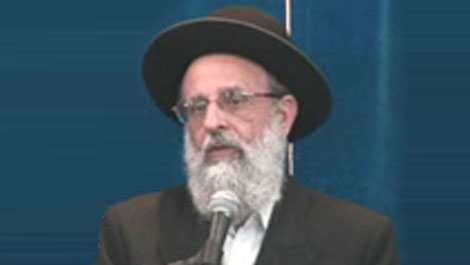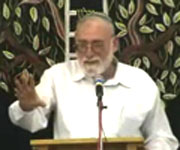Beit Midrash
- Sections
- Chemdat Yamim
- Parashat Hashavua
- Torah Portion and Tanach
- Vayikra
- Vayikra
But was Pesach Mitzrayim really a korban? Was blood sprinkled on an altar?! Were specific parts of the animal (eimurin) offered to Hashem?! On the other hand, the mishna (Pesachim 9:3) lists a relatively short number of differences between Pesach Mitzrayim and Korban Pesach for all generations, which certainly gives the impression that, at least at their core, they are both korbanot. The Torah itself, after discussing Pesach Mitzrayim, declares that Bnei Yisrael will do this service for all generations (ibid. 25).
A fascinating gemara (Pesachim 96a) gives us cause to realize that Pesach Mitzrayim was more of a korban than one might think. The gemara asks about the apparent fact that no blood was sprinkled on an altar in Pesach Mitzrayim and says that its blood was actually placed on three "altars," the lintel and the two doorposts of the individual Jews’ houses. (The gemara addresses the eimurin as well, but there is a machloket whether it means to say that there were no eimurin or whether the proper parts were burnt "for Hashem," albeit not on an altar.)
How could the blood on the doorposts be considered like putting blood on the altar of Hashem’s Temple? Doesn’t the Torah say clearly that the blood was for Hashem to "see" and pass over the appropriate houses, sparing their firstborn (ibid. 23)? What does that have to do with service of Hashem?!
One answer is that we, as apparent from our questions, are looking at things in the wrong order. The doorposts were chosen as altars, and thus the blood was put there as part of a korban procedure. Then the fact that Hashem saw the people’s service protected them.
Another possibility refocuses our outlook on service of Hashem, in general. Does the blood on "Hashem’s altar" help Him? No, it helps us, protects us, and brings us success in a variety of ways. Usually, we have to work on reminding ourselves of this point, which some do more effectively than others. However, in this first set of commandments given to the Jewish people as a nation, Hashem left no room for doubt. He expressed that He wanted to save all the Jewish homes, and so He appointed each home to consist of "altars" in its entrance. Hashem then taught that by following the steps of sacrifice (which albeit were unique regarding the Korban Pesach), they would be protecting themselves, in a very clear way, on that night. During the course of history, it is our responsibility to find Hashem’s protection in more subtle ways.

Parashat Hashavua: From Paroh to Hamas and Iran – In Those Days at this Time
Rabbi Yossef Carmel | Kislev 5786

Parashat Hashavua: What’s in the Name of Noach?
Rabbi Yossef Carmel | Cheshvan 5786

The Right Pace to Leave a Holy Place
Parashat Beha'alotcha
Rabbi Yossef Carmel | 16 Sivan 5764

Giving More Than You Have?
Rabbi Yossef Carmel | 20 Cheshvan 5767

Rabbi Daniel Mann

Cooking for Shabbat at the End of Yom Tov
Iyar 20 5783

Ribbit in a Loan from an Irrevocable Trust Fund
Adar 7 5777

Timtum Halev – Part II
Adar I 8 5776























